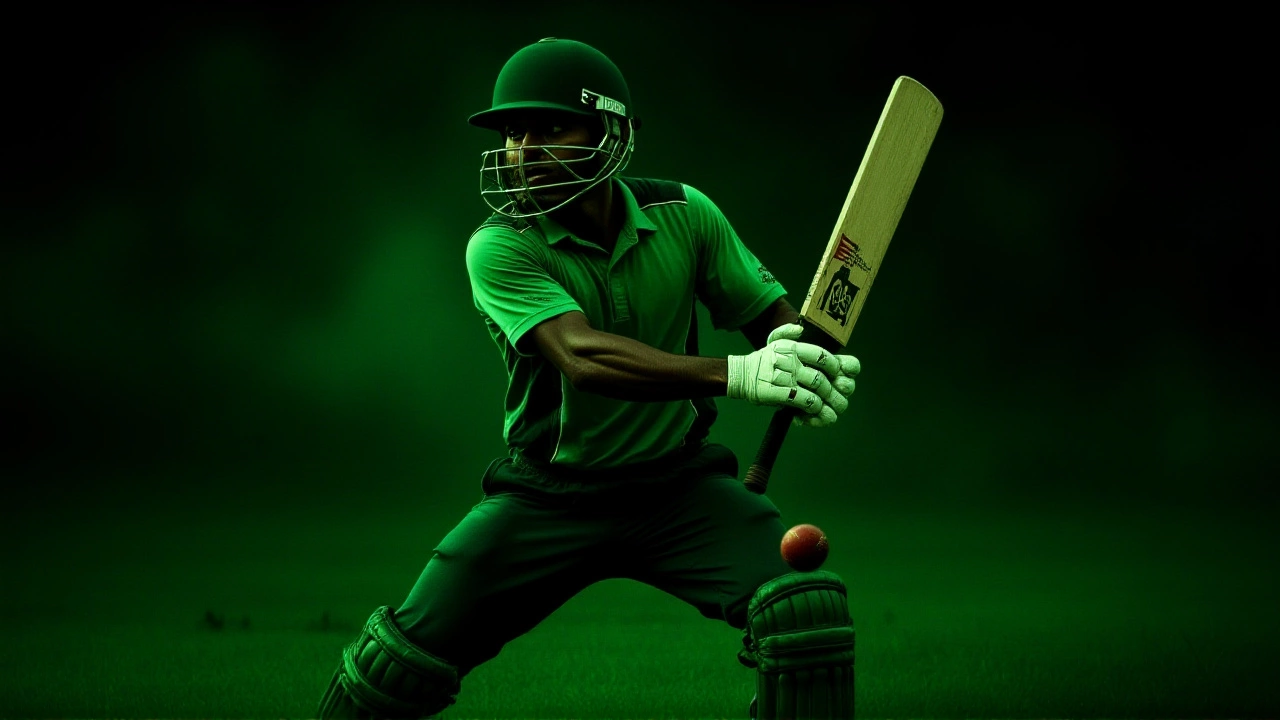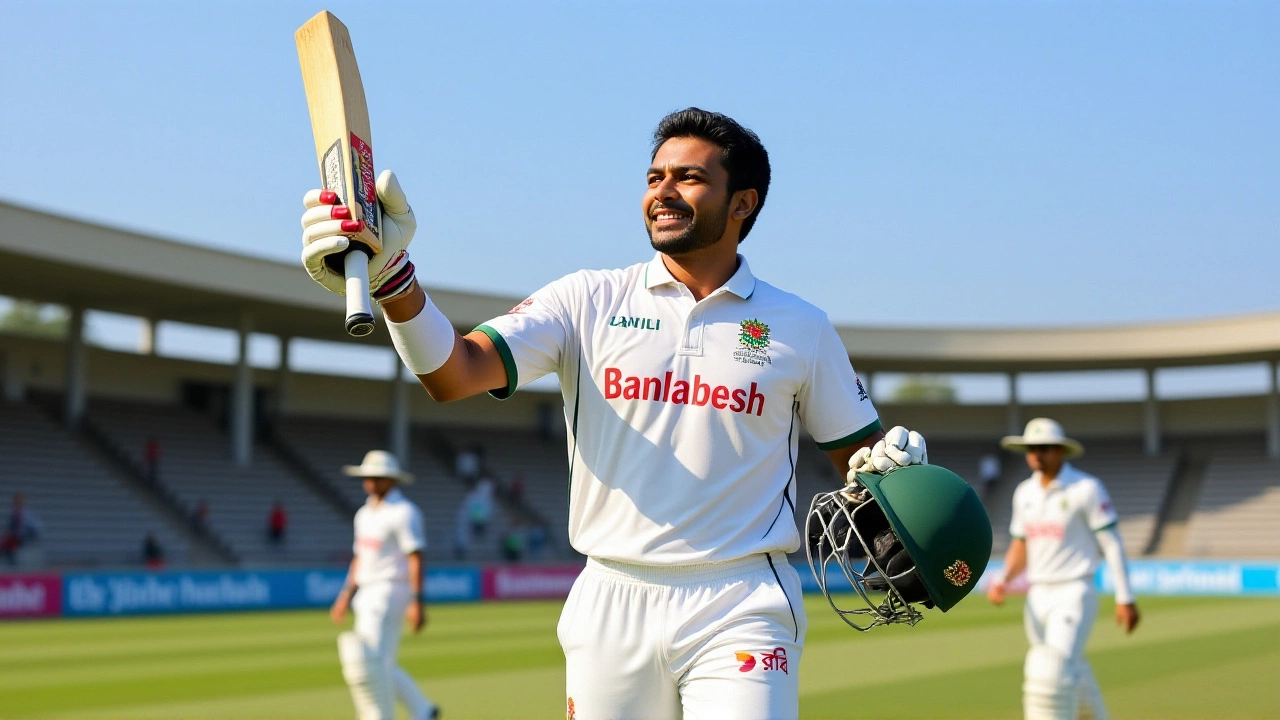When Bangladesh declared their first innings at 587 for 8 on Day 4 of the first Test against Ireland, the writing was on the wall — and it was written in bold, unrelenting strokes. The match, played at the Sylhet International Cricket Stadium from November 11 to 15, 2025, ended not with a whimper but with a roar: Bangladesh won by an innings and 47 runs, their 12th consecutive victory over Ireland across formats. The architect of this demolition? Mahmudul Hasan Joy, whose 169 not out from 283 balls anchored a batting masterclass that left Ireland’s attack shell-shocked. By the close of Day 2, Bangladesh were 338 for 1, with Joy and Mominul Haque (80*) looking like they might never be parted. They weren’t. And neither was Bangladesh from control.
Day Two: A Batting Clinic in Sylhet
The first day had been a cautious affair — Ireland, led by captain Andy Bourne, scraped together 286, their highest total against Bangladesh in Test cricket. But the real story unfolded on Day Two. With the pitch offering little assistance to bowlers and the sun beating down on the Sylhet outfield, Bangladesh’s top order seized the initiative. Shadman Islam fell for 80, but Joy, calm as a monk in meditation, stepped in. His 169* wasn’t just about runs; it was about tempo, patience, and precision. He took only 283 balls, hit 21 fours, and didn’t play a single reckless shot. Mominul, equally composed, added 80 from just 124 deliveries. The pair put on 189 for the second wicket — a partnership that turned a good start into a commanding position.Debutants and Disasters: Ireland’s Day of Reckoning
This Test was meant to be a coming-of-age moment for Ireland’s new generation. And it was — just not in the way they hoped. Three players made their Test debuts: Harry Tector Carmichael, Jordan Neill, and Hasan Murad. ESPNcricinfo called it “a day of the debutants,” but the reality was harsher. Carmichael, who top-scored for Ireland in their first innings with 57, looked composed. But in the second innings, after he and Paul Stirling had both reached fifties, Ireland collapsed — losing seven wickets for just 38 runs in two sessions. The scoreboard read 198 for 7 at the close of play on Day 5. No one else crossed 30. The bowling figures were even more damning: CA Young bowled 7 overs for 0 wickets and 27 runs; AR McBrine bowled 24 overs for 0 wickets and 93 runs. Ireland’s bowlers simply couldn’t find a grip.Leadership and Legacy: Shanto Back in Charge
The captaincy question had lingered since Najmul Hossain Shanto stepped down in June 2025 after a 1-0 series loss in Sri Lanka. But with the World Test Championship cycle still alive, the Bangladesh Cricket Board reinstated him — and he didn’t waste a second. Under his leadership, Bangladesh posted their highest total against Ireland in Tests. Shanto, now captain in 14 Tests, didn’t need to bat in this match — his role was strategic, and he delivered. He kept the team focused, rotated bowlers intelligently, and let Joy and Mominul play their natural games. “He’s the glue,” said one veteran player off the record. “He doesn’t shout. He just makes sure everyone knows their job.”
Historical Context: A One-Sided Rivalry
Before this match, Bangladesh had won every single Test they’d ever played against Ireland — one in 2023 in Dhaka. That match, too, ended in an innings win. Ireland’s lone highlight? Wicketkeeper Lorcan Tucker’s century on debut — the second ever by an Irishman in Tests. But even that wasn’t enough. In ODIs, Bangladesh have won 11 of 16. In T20Is, 5 of 8. The gap isn’t just in results — it’s in infrastructure, coaching, and depth. Ireland’s squad still relies heavily on players from county cricket in England and Ireland, while Bangladesh’s team is now fully professionalized, with dedicated domestic structures and foreign coaches like Ashraful, named batting coach ahead of this series.What’s Next? Dhaka and the T20I Blitz
The second Test of the two-match series begins in Dhaka on November 20, 2025, with play starting at 9:30 AM local time. Ireland will need a miracle to avoid another innings defeat. But the bigger challenge lies ahead: a three-match T20I series. The first two games are in Chattogram on November 25 and 27, followed by the finale in Dhaka on November 29. Ireland’s injured opener Ross Adair will be replaced by debutant Jordan Neill — the same player who debuted in this Test and bowled 8 overs without a wicket. Can he adapt? Can Ireland find a spark? Or will Bangladesh sweep everything in sight?
Behind the Numbers: Why This Matters
Bangladesh’s 587 for 8 was their highest Test total against Ireland — and the fifth-highest ever by Bangladesh at home. Joy’s 169* was his third Test century, and his first as a top-order batter in a winning cause. Mominul’s 80* was his 21st Test half-century, tying him with Mushfiqur Rahim for most by a Bangladeshi batter. Meanwhile, Ireland’s 198 all out in their second innings was their lowest total against Bangladesh in any format since 2018. The stats don’t lie: this isn’t just a win. It’s a statement.Frequently Asked Questions
How did Mahmudul Hasan Joy’s performance compare to previous Bangladesh batters against Ireland?
Joy’s 169* was the highest individual score by a Bangladeshi batter against Ireland in Test cricket, surpassing Mominul Haque’s 149 in Dhaka 2023. It was also the first Test century by a Bangladesh batter in Sylhet since 2018. Unlike past innings that relied on aggressive strokeplay, Joy’s knock was defined by control — he faced 283 balls, the most by any Bangladesh batter in a single innings against Ireland, proving he can anchor a chase under pressure.
Why did Ireland’s bowling attack fail so badly?
Ireland’s bowlers were exposed by Bangladesh’s disciplined top order and a pitch that favored strokeplay. No Irish bowler took more than one wicket in the match. McBrine and Young bowled over 30 overs combined and conceded 120 runs without a wicket. The lack of variation — especially in line and length — allowed Joy and Mominul to dominate. Ireland’s pace attack, which relies on swing, found no movement in Sylhet’s dry surface, and their spinners were too predictable.
What impact does this result have on Bangladesh’s World Test Championship campaign?
While this match doesn’t count toward WTC points (Ireland is not a full member), the win reinforces Bangladesh’s home dominance and builds momentum ahead of their crucial fixtures against South Africa and England in 2026. Winning by an innings boosts team confidence and signals to the ICC that Bangladesh can now consistently outplay top-tier teams on home soil — a key factor in future scheduling and seeding.
Who are the key players to watch in the upcoming T20I series?
For Bangladesh, Mehidy Hasan Miraz is the X-factor — his all-round ability makes him dangerous in T20s. Litton Das and Najmul Hossain Shanto will anchor the top order. For Ireland, debutant Jordan Neill must prove he can bat under pressure, and Paul Stirling remains their only proven T20 performer. The series could determine whether Ireland qualifies for the 2026 T20 World Cup.
Is this the end of Ireland’s competitive hopes in Test cricket?
Not necessarily — but it exposes their structural gap. Ireland lacks a professional domestic structure, consistent coaching, and depth beyond their core players. While they’ve shown flashes of brilliance (like Tucker’s century in 2023), they still rely on part-timers and county players. Without investment in youth academies and longer-format pathways, they’ll keep losing by innings. This result isn’t a death knell — it’s a wake-up call.
Why was Ashraful appointed as Bangladesh’s batting coach for this series?
Ashraful, a former Bangladesh captain and prolific batter, was brought in to mentor the middle order after their struggles in Sri Lanka. His experience in high-pressure situations and his ability to break down technical flaws helped Joy and Mominul stay focused. His presence also signaled a shift: Bangladesh now treats Test cricket with the same seriousness as ODIs and T20s. His impact was immediate — the team’s average in the first innings jumped from 242 in 2024 to 347 in this series.
